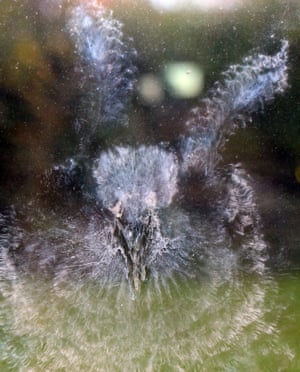I found the remains of the blackbird on the strip of rough grass between the hedge and a group of small holly trees. The drift of pale feathers drew my eye first, left in a generous arc where they had fallen after being plucked from the body. Apart from the tail, legs and sternum, little remained of the bird itself, a small adult female, possibly one of those raised in the same hedge last summer. It seemed to have been eaten from the top down, perhaps the same direction from which it had been attacked, and I ran over in my mind the list of possible assailants.
In this quiet wooded corner my suspicions soon fell on our local sparrowhawk. Only an occasional, solitary visitor to the garden, this hawk has shown an especially messy interest in the growing number of collared doves that frequent the beech trees along the lane. They are almost the perfect prey – large, slow-moving and seemingly not very observant – and I have seen them fall victim to the hawk on at least two occasions.
The first time was an early July morning a few years ago. As I opened the curtains to look across the valley, the sparrowhawk was directly below me in the rough grass, just a few yards from where I would find today’s blackbird, standing on top of a dove and starting to eat. The window was open and the wooden clunk of the curtain rail made it look up. I stayed perfectly still as we regarded each other – then it took flight and jinked away through the trees, leaving me to literally pick up the pieces.

More recently, at dusk in early October, I was alerted by a heavy impact against the glazed back door. It sounded as though a football had hit it, but the perfectly defined bird-shaped grease mark left on the glass told another story. The sparrowhawk perched briefly on a nearby bench, shaking its head as though stunned, before lurching away, leaving its kill behind. This second collared dove was eventually scavenged by a red kite, as perhaps were the remains of the blackbird. Very little goes to waste in the rural food chain.